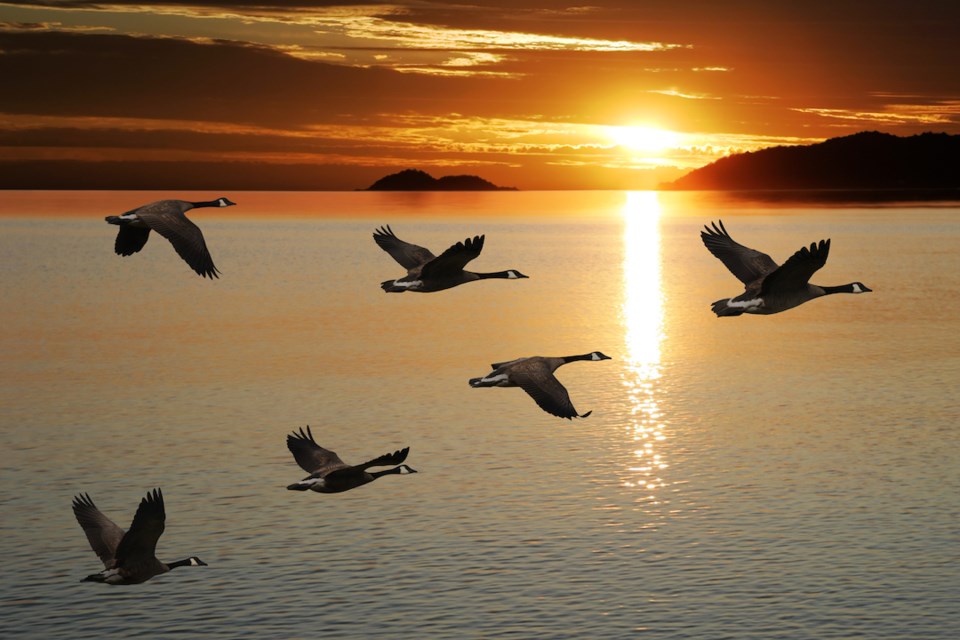Mid-October is the usual time for the southbound migration of the geese flocks to pass over the Sunshine Coast. And so it proved! On Sunday, the 16th, there was a day-long procession of flocks heading south. There are five possible species of geese that visit the Sunshine Coast, but virtually all overhead flocks will be either snow geese or Canada geese. Individual flocks can be identified both visually and aurally. Snow geese are white with black wing tips, while Canada geese are largely brown when seen from beneath. Geese flocks are inexplicably vocal while migrating, generally keeping up a constant babble that must serve as a socialization device. If I was anthropomorphizing I can visualize the older birds that have made the trip previously encouraging the novice younger birds with sentiments such as “we’re nearly there.”
Despite the flight of the geese being a familiar sight, as they pass overhead twice a year, there was an incongruity in the situation. Normally, by mid-October there is a chill in the air or perhaps some of our liquid sunshine. On Sunday I was sitting on the deck and in the garden, dressed in shorts and tee-shirt, and enjoying the 20 degree temperature of our endless summer of 2022.
The snow geese that we see migrating overhead are coming from their breeding grounds on Wrangell Island in Siberia and will spend the winter in the Fraser delta and the Skagit Flats in Washington. During November, as many as 20,000 can be seen foraging on fields on Westham Island in Ladner where they are easily viewed. One of the great sights in the bird world is seeing 20,000 snow geese rise into the sky when they are spooked by an overflying eagle.
In my last column, I stated that 99.99% of all the birds that visit the Sunshine Coast to breed during the summer had now departed. That remark left me some tiny wriggle room in case a single unexpected and tardy individual was still with us. On Oct. 15, Mari Petznek, one of our keenest local observers, spotted and photographed a wester wood-pewee (a flycatcher species) in the Sechelt Marsh. This species, fairly common during the summer, has usually departed by the end of the first week in September, with a previous latest record of Sept. 24. The winter range of western wood pewee is the Andes from Colombia south, so this bird has a long way to go!
Congratulations to Mari again, as on the 17th she photographed a rare migrant sparrow, a clay-coloured sparrow, at the Sechelt Marsh, for only the sixth local record of this “little brown job.”
To report your sightings or questions, contact [email protected] or 885-5539. Good Birding.



